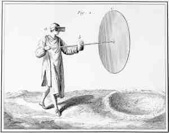THE LONDON CROWN GLASS COMPANY



1330 French glassmakers produced CROWN GLASS for the first time at Rouen. Some French Crown and Broad Sheet was imported into the UK.
1620 BLOWN PLATE was produced in London by grinding and polishing Broad Sheet, and was used for mirrors and Coach Plates.
1678 CROWN GLASS was first produced in London. Because of its finer quality, this process predominated until the mid nineteenth century.
1688 The French produced POLISHED PLATE in larger sizes by casting and hand polishing.
1773 English POLISHED PLATE by the French process was produced at Ravenshead. By 1800 a steam engine was used to carry out the grinding and polishing of the cast glass.

1847 James Hartley introduced a ROLLED PLATE glass with obscured ribbed finish, which is often found glazed in the roofs of railway termini.
1888 Chance Bros introduced MACHINE ROLLED patterned glass.
1898 Pilkingtons introduced Hexagonal Rolled WIRED CAST.
1903 MACHINE DRAWN CYLINDER Glass invented in the USA, was manufactured in the UK by Pilkingtons from 1910 to 1933.
1913 Belgium produced the first machine FLAT DRAWN SHEET glass. It was first drawn in the UK in 1919 in Kent .
1923 First UK production of continuous POLISHED PLATE glass, using single grinding system.
1938 Pilkingtons developed the twin ground POLISHED PLATE system.
1959 FLOAT GLASS was launched on the UK Market, invented by Sir Alistair Pilkington.